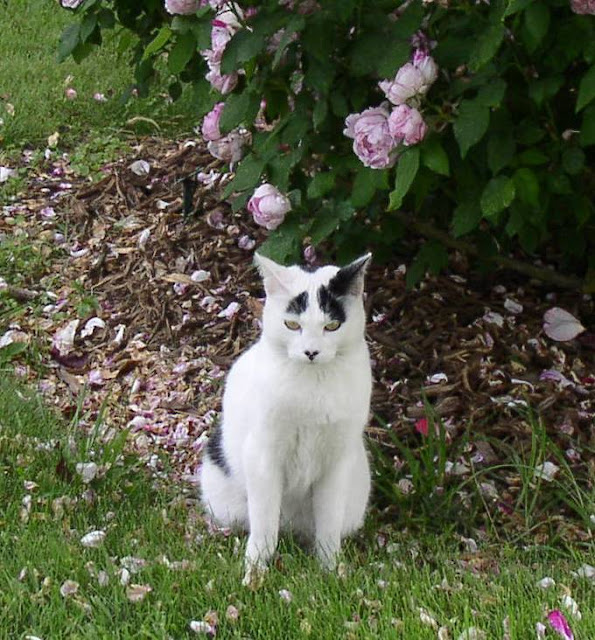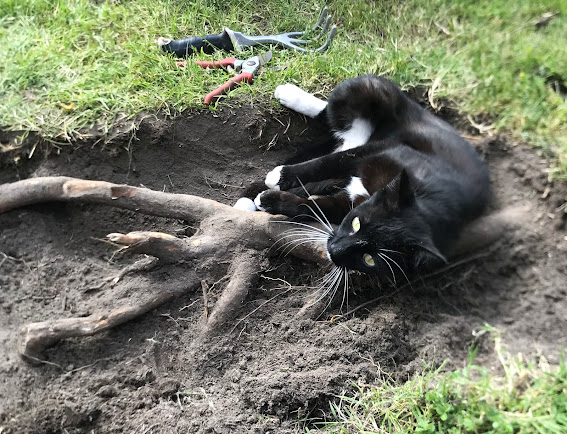Summer is definitely here. With several hot days, the spring
rose flush has definitely ended. The good news is that you should be seeing
lots of new growth.
 |
Secret, hybrid tea, sending up a candlebara
|
We were fortunate to have such an incredible weather pattern
this season which developed some of the largest, most colorful roses I’ve seen
in years. The hot temperatures, of course, shorten the length of time the
flowers will stay on the roses. It also means that your gardening time
increases as the sooner you remove the spent flowers, the quicker new growth
will appear.
Hybrid Tea Candelabras
I’m happy to say that this year I’m seeing lots of
candelabras in my garden. Candelabras are those magnificent new canes with a
large flush of new blooms on the top. I like to think of them as a “bouquet on
a stick.” This usually doesn’t happen on the first flush of blooms but comes
along in the next flush. Yes, this year was a great season for good quality
blooms early on but it was also, in my garden, the first time in five years
that I’ve fed the roses Epsom salts and both a dry organic fertilizer and a
MiracleGro type product. (There are several rip-off varieties out there and
they are more or less the same thing as the original.)
 |
Blue Girl, hybrid tea, sending up a large candelabra
|
These candelabras may need some tending, however. We’ve had
some windy days which have knocked many of my flower-laden canes over. Get
yourself some of those tiny bamboo supports and prop up these great sprays as
the main cane might not be sturdy enough to support all the flowers –
especially if they get wet in an odd summer shower.
Regularly, remove the spent flowers on candelabras little by
little. If there’s one large flower on a short stem right in the middle of the
spray, remove that bud early on and you’ll get a better looking flower spray.
 |
Radiant Perfume: it's a grandiflora and they regularly send up large candelabras
|
Once the candelabra’s last flower is gone, prune it back to
where it is a single stem and pick a spot where there’s a bud eye facing the
outside of the plant. On some of the larger ones and where space allows, you may wish to keep two of the original four of five canes. I'd recommend pruning down to the bud eye facing outward two leaves up from where the cane branched out. This will ensure that the joint hardens sufficiently to support new, heavier growth above it.
 |
Sacred Heart, hybrid tea, sent up an enormous spray. Only the last two flowers remain.
|
The Re-bloom Cycle
The cycle usually takes about six weeks. It’s also important
to water and feed regularly throughout the long summer. Water is the most
important factor in new growth, even more so than food. Look at the ground
beneath your rose bush. If it looks dry on the surface, it probably wants more
water. If the temperatures are above 80 degrees or if there have been long
sustainable periods of dry air and wind, you need to water at least twice a
week.
Water in the early morning, if there’s a chance of the
leaves getting wet. Water in the evening, if you can hold the hose under the
bush. If you are on a drip system, start watering around 4 a.m. and make sure
during the day that all the emitters are in the right spot and working. Leaves
which stay wet for more than four or five hours are an invitation for airborne
fungus spores to attach themselves and hatch.
I like to feed the roses something about every two or three
weeks during the growing season. “Something” is not a particularly helpful word,
I know, but it happens to be, for me, whatever is on sale. Giving your roses
just a little bit of food almost every time you water is more important than a
whole lot of fertilizer a couple of times during the year. Food helps you get
the maximum result out of your roses. Remember to water well the day before and
then feed the next day with just a little water to soak it in.
Organic food (blood, bone and hoof, kelp meal, fish
fertilizer) needs time to be in the soil and breakdown into nutrients the rose
can readily absorb. If you provide a little organic every time you feed, you’ll
always have something in the soil in various stages of breakdown.
For established roses, you could just stop everything right
now and your roses most likely won’t die. But, you as a gardener are the tender
of their ability to perform well. Keep them watered and give them food and make the effort to get good results -- it's worthwhile to your own self-satisfaction.









.JPG)
























